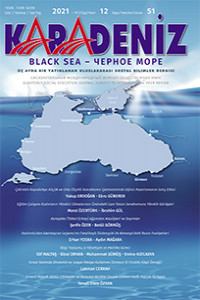KIRSAL KESİMDE DİNDARLIK VE SOSYAL MEDYA KULLANIMI (GİRESUN İLİ FINDIKLI KÖYÜ ÖRNEĞİ)
RELIGIOSITY AND SOCIAL MEDIA USE IN RURAL AREAS (A CASE STUDY IN GIRESUN PROVINCE / FINDIKLI VILLAGE)
Author(s): Lokman CERRAHSubject(s): Social Sciences, Media studies, Theology and Religion, Rural and urban sociology, Identity of Collectives
Published by: Kültür Ajans Tanıtım ve Organizasyon
Keywords: Religiosity; Popular Religiosity; Normative Religiosity; Social Media; Rural;
Summary/Abstract: The concept and phenomenon of religiosity, which is considered as the reflection of religion on human life, always varies. Each social group has different types of religiosity according to their educational and economic status and living areas. In this study, normative and popular religiosity preferences of people living in rural areas are discussed and evaluated through various variables. Our research, which is based on a field study, also evaluates these religiosity preferences in terms of social media usage preferences. Because the use of social media has become almost a necessity for today's people. In our study, the quantitative method was used, and in this context, Normative religiosity scale, Popular religiosity scale and Social media usage scale, which were previously developed and evaluated in some academic studies, were used. Reliability tests were conducted for all three scales and they had higher C.Alpha coefficients from these tests in all three scales. The questionnaire form prepared for the study was applied to the participants face to face. According to the results of this study, in which we evaluated religiosity preferences and social media use in rural areas, normative religiosity level in rural areas is higher than popular religiosity in terms of all variables. The religiosity scale scores of women, older people, divorced/deceased people, illiterate people, those with middle class economic status, those who show the religious elders known in the region as the source of their religious knowledge, and those who follow social media groups are higher than the others. Men, younger people, singles, high school graduates, economically lower classes and those who participate in social media groups have higher social media usage scale scores than others. In addition, the data reveal a negative relationship between religiosity scales and social media use.
Journal: Karadeniz Uluslararası Bilimsel Dergi
- Issue Year: 2021
- Issue No: 51
- Page Range: 90-115
- Page Count: 26
- Language: Turkish

